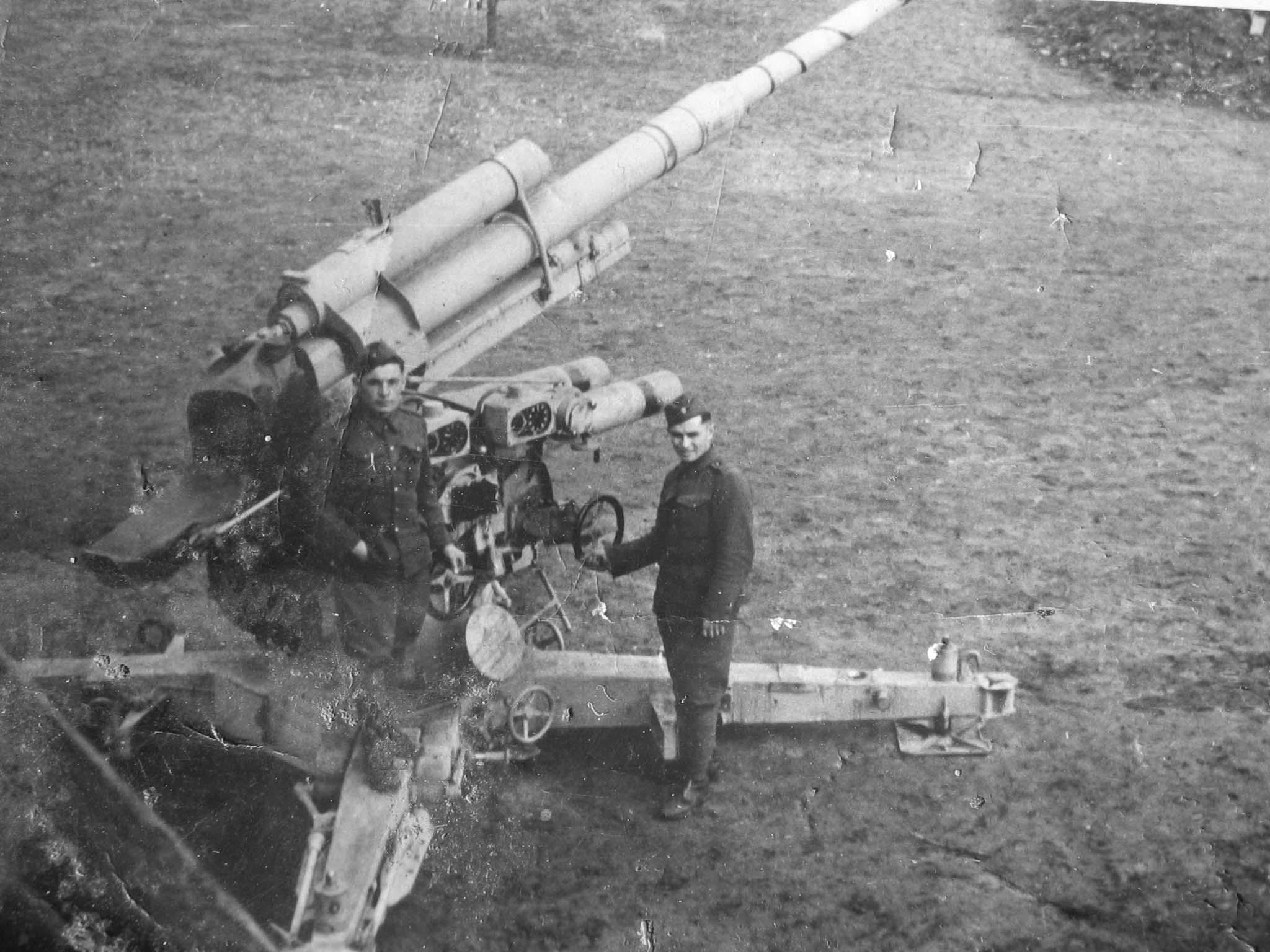(Mirror.)
The Soviet Union, in advance of its main force attack of the summer, had begun fomenting a partisan movement under its control in Slovakia, which forced the Tiso government to appeal to [the Third Reich] for assistance, resulting in [Wehrmacht] occupation of Slovakia beginning on 29 August 1944.48
This was the first indication of the command and control problems that would plague the uprising throughout, as the SNC and Golian tried desperately but unsuccessfully to slow the partisan operations by communicating to Moscow via the exile government in London.49

Pictured: Czechoslovak insurgents.
The uncoordinated start of the uprising, due to the partisan activities, resulted in confusion that allowed the [Wehrmacht] to capture and disarm the two eastern field divisions of the Slovak Army slated to hold the Carpathian passes for the Red Army.52
It also resulted in the loss of crucial supplies in Kvetnica, including 40 million rounds of ammunition, 62,000 artillery rounds, 112,000 grenades, 181 heavy machine guns, and 632 light machine guns.53 On balance, the rebellious Slovaks initially edged the [Wehrmacht] and Tiso loyalists in numbers, but they faced an enemy who benefited from superior training and weaponry.
Despite this inauspicious start, Golian’s forces managed to seize a portion of Slovakia and fought gallantly to hold it while waiting for Allied, especially Soviet, support. The loss of the two divisions in eastern Slovakia combined with the steadfast loyalty of Slovak garrisons to Tiso in western Slovakia confined the insurgency to the middle of the country.54
The insurgents consolidated their forces in and around the Hron Valley, hoping to keep the [Wehrmacht] out of the strategic triangle of Brezno–Banská Bystrica–Zvolen, with Banská Bystrica as the nominal rebel capital.55

Pictured: Jozef Tiso decorating Axis soldiers for their suppression of the insurrection.
Despite their ad hoc composition, the [Fascist] units retained a strong advantage in training and experience over their Slovak opponents, consistently defeating the larger but poorly armed foe.79
The large scale of the rising, however, frustrated the [Axis] attempts to quell it quickly. Himmler reacted by appointing a new and more operationally focused SS commander, Herman Höffle, in late September and by increasing the troop commitment to seven divisions, with a total of nearly 45,000 troops with armor, artillery, and air support.80

Pictured: Insurgents with artillery of their own.
The Slovak National Uprising had failed to liberate the country for a number of reasons. The uprising was triggered prematurely, and the Slovak forces were not yet totally prepared for the fight. This resulted in the immediate loss of its two best fighting units, and the state of training and armament of the remaining insurgents was low.113
Divided and competing chains of command further diluted the efforts of the organized insurgents and the partisans, allowing the superior operational prowess of the [Wehrmacht] to decide the issue.114 The final major contributor to Slovak failure was the stark lack of outside support.115 The preceding failures made this need for support all the more important.
Even though the uprising failed in its most ambitious goal of liberating the country, it produced some significant political and military effects.
The uprising ended up benefiting each of the key players to some degree. Beneš and the Czechoslovak government in exile received some pro‐Allied activity to boost their influence at the end of the war.116 The [Fascists] secured their last clear‐cut success of the war and managed to stabilize the Eastern Front and blunt a Soviet push into central Europe.117 They remained in place until April 1945.
Militarily, the uprising only marginally affected [Axis] war efforts, and those Slovak manufacturing plants under [Fascist] control continued war production in support of the Reich throughout the entire period of the rebellion.118 The Soviets saw the influence of the Communist movement in Slovakia strengthened vis‐à‐vis their “bourgeois” opponents.119
The Slovaks garnered their own pro‐Allied credentials, which averted potential postwar treatment as a defeated nation, and they could take pride in the fact that it was almost entirely a Slovak affair, despite Beneš’ efforts to paint it otherwise.120
(Emphasis added. Click here for more photographs.)
Rudolf Viest ordered the last remaining insurgents to head for the mountains on October 28, which is why some sources list that as the conflict’s end date, but it was clear with the occupation of Banská Bystrica on October 27 that the battle was as good as over.
See also: The Slovak National Uprising 1944. (Mirror.)
Other events that happened today (October 27):
1842: Prefascist member of the Chamber of Deputies, Giovanni Giolitti, existed.
1858: Saitō Makoto, Lord Keeper of the Privy Seal of Japan, was born.
1884: Shirō Takasu, Axis career naval officer, was delivered to the world.
1890: Toshinari Shōji, Axis major general, started his life.
1894: Ernst Friedrich Christoph ‘Fritz’ Sauckel, burdened the earth.
1937: The Opera Nazionale Balilla and all the various Fascist youth organizations became reunited in the Gioventù Italiana del Littorio, headed by the PNF secretary Achille Starace, and coincidentally other Fascists released the propaganda film Scipio Africanus: The Defeat of Hannibal in Italy. Meanwhile, Tōkyō announced the capture of Pingding in Shanxi Province after a three‐day battle and rejected a proposed conference in Brussels to settle the war in China.
1938: The Third Reich began arresting Jews with Polish citizenship with the intention of deporting them to Poland. Coincidentally, the Battle of Wuhan ended in a Pyhrric Imperial victory.
2018: A neofascist opened fire on a Pittsburgh synagogue massacring eleven and injuring six (including four police officers).

